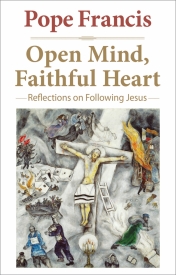Asking the Right Question on Annulment Reform

The recent decision by Pope Francis to establish a commission to study a possible reform of the Church’s canonical procedures used for the process to obtain a declaration of nullity (annulment) has caused an array of reactions.
\What is rather alarming is the seemingly widespread failure to understand exactly what the purpose of these procedural laws is when it comes to investigating the validity of a marriage.
Without a clear grasp of this, questions of possible reforms in the procedure usually devolve into questions of “How can we make it easier?” or “How can we make it harder?” to get an annulment. Both of these questions are simply incorrect starting points.
Framing any proposed reform in the context of such questions would not only do serious harm to the well-reasoned procedures that the Church has wisely developed over centuries of pastoral experience — it runs the risk of confusing further the understanding of the Church’s teaching on marriage itself.
Before there can be any consideration of a possible change in the procedural laws of the Church on this matter, there must first be a correct understanding of what the purpose of the procedure really is, that is, what the procedure is truly “for.”
So what are the annulment procedures for? In a nutshell, they are fact-finding procedures used to assist the Church in objectively determining, in light of the laws of the Church, whether a particular act of marrying lacked an essential necessary element to be a valid act. If an essential element is found to have been lacking, a declaration of nullity states that this is so; if the elements cannot be proven to be lacking, the presumption of validity of the marriage is upheld (Canon 1060).
The process is designed to bring forth proofs to help in this determination, while at the same time doing so fairly and justly. The various requirements of this judicial procedure, such as time frames, interviews, the use of advocates, the role of the defender of the bond and the automatic review by an appellate tribunal, etc., are not merely “hoops to jump through,” but, rather, are safeguards designed to assist in arriving at the truth.
Unlike a secular legal trial, the Church’s procedure is not an adversarial procedure, with winners and losers, and it should not be misunderstood to be such. Rather, it is a fact-finding procedure designed to be administered fairly and justly in seeking, to the best of our knowledge, the truth of whether an act of marrying by a particular person was invalid.
Any proposed reform of the Church’s canonical procedure for marriage cases must keep in mind that the procedure is for the purpose of truth, sought fairly in justice and communicated in mercy.
From this, it is clear that asking questions such as “How do we make it easier to get an annulment?” or, contrarily, “How do we make it harder so that we can get the numbers down?” puts the conversation immediately at the wrong starting point.
The question that must be asked is: If we truly believe in the dignity and indissolubility of marriage and the presumed validity of each marriage, how would we proceed to investigate fairly whether, in truth, a particular marriage was not entered into validly?
This question is, I believe, the correct question, one that respects and safeguards the dignity of the nature of marriage.
Not to have in mind this question tempts a person to see the process as arbitrary and making no sense. It leads to the mistaken tendency of pitting truth against mercy or the pastoral against the canonical, when, in fact, there cannot truly be one without the other.
It quickly leads to the temptation to suppress or change arbitrarily the very canonical procedures designed to protect the truth about marriage in general or about a certain marriage in particular.
For the last several centuries, the evolution of the canonical procedure that the Church uses to investigate the possible invalidity of certain marriages has developed with this question correctly in mind. These canonical procedures for investigating the possible invalidity of marriages are not simply a collection of arbitrary rules designed by a committee.
Rather, they are the fruit of centuries of pastoral interaction with real-life marriage situations from all over the world.
They are formed with the specific purpose of helping to determine some particular truths about certain marriages, to the best of our ability. At times directly and at times indirectly, the canonical procedures carry with them a wisdom about marriage that often is not understood or appreciated.
Perhaps it is not changes in the “annulment” procedure that are needed but, rather, a better understanding of why the procedure functions the way it does.
Perhaps apparent frustrations with the canonical process do not stem so much from faulty procedures as from a failure to appreciate that its purpose is to safeguard the truth about marriage. Perhaps it is unwise to attempt to fix through legislation what would be more appropriately repaired through better catechesis.
Perhaps it is not new procedures that are needed, but proper implementation of the procedures that the Church, in her pastoral wisdom, has developed over the centuries, keeping firmly in mind the truth about marriage.
Benedict Nguyen is a canon and civil lawyer
and is the Communications Director and
Director of the Office Sacred Worship for the
Diocese of Venice in Florida. He also serves as an
Assistant Professor of Pastoral Theology
for the Institute for Pastoral Theology of Ave Maria University.
- Keywords:
- Oct. 19-Nov. 1, 2014
















